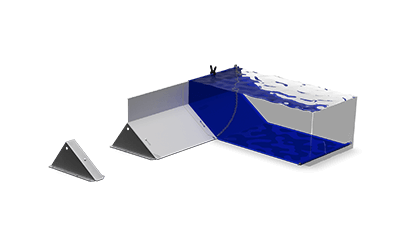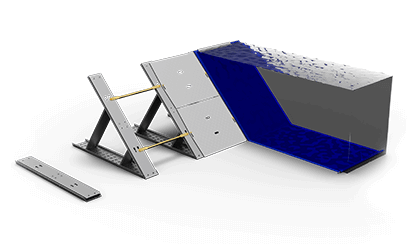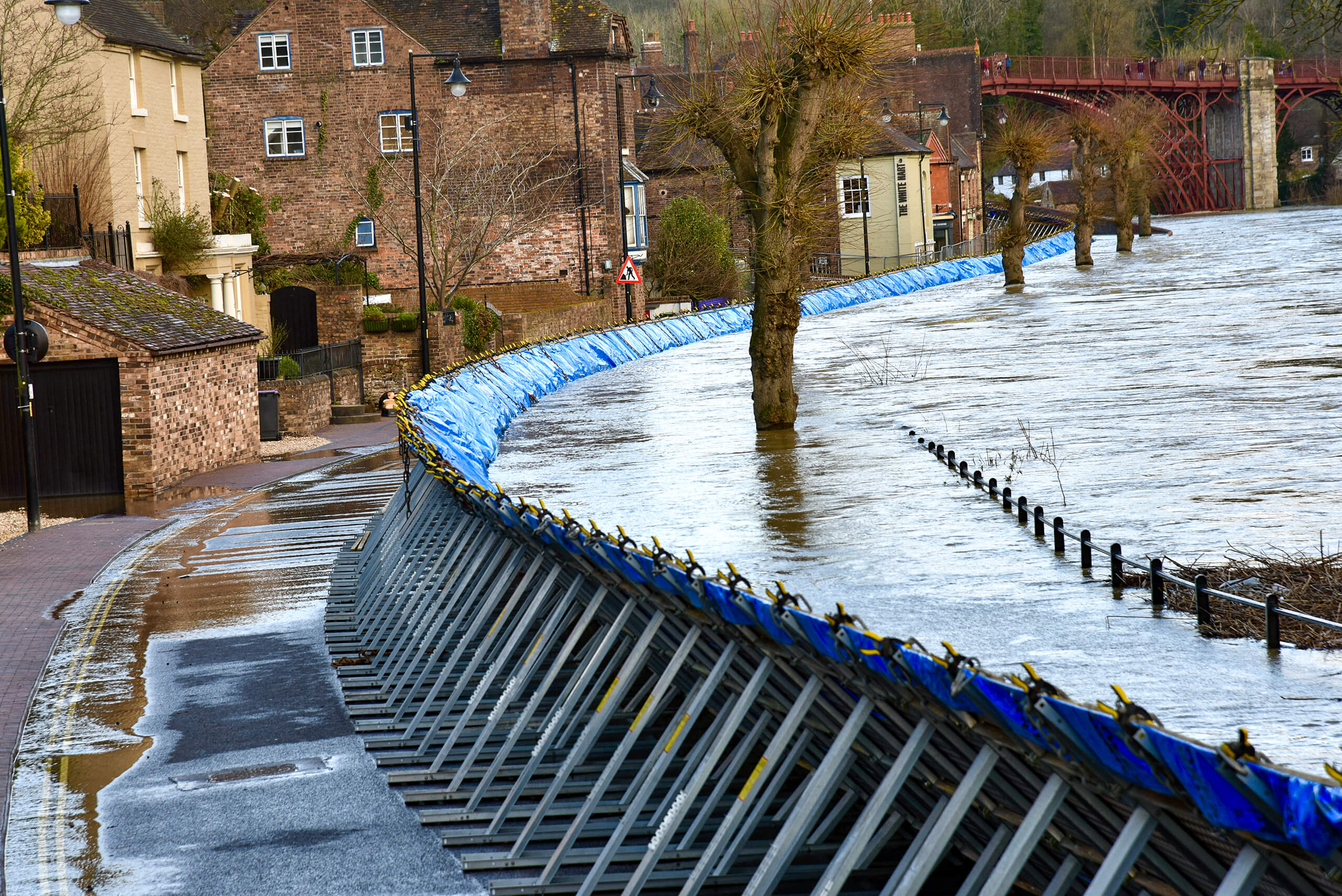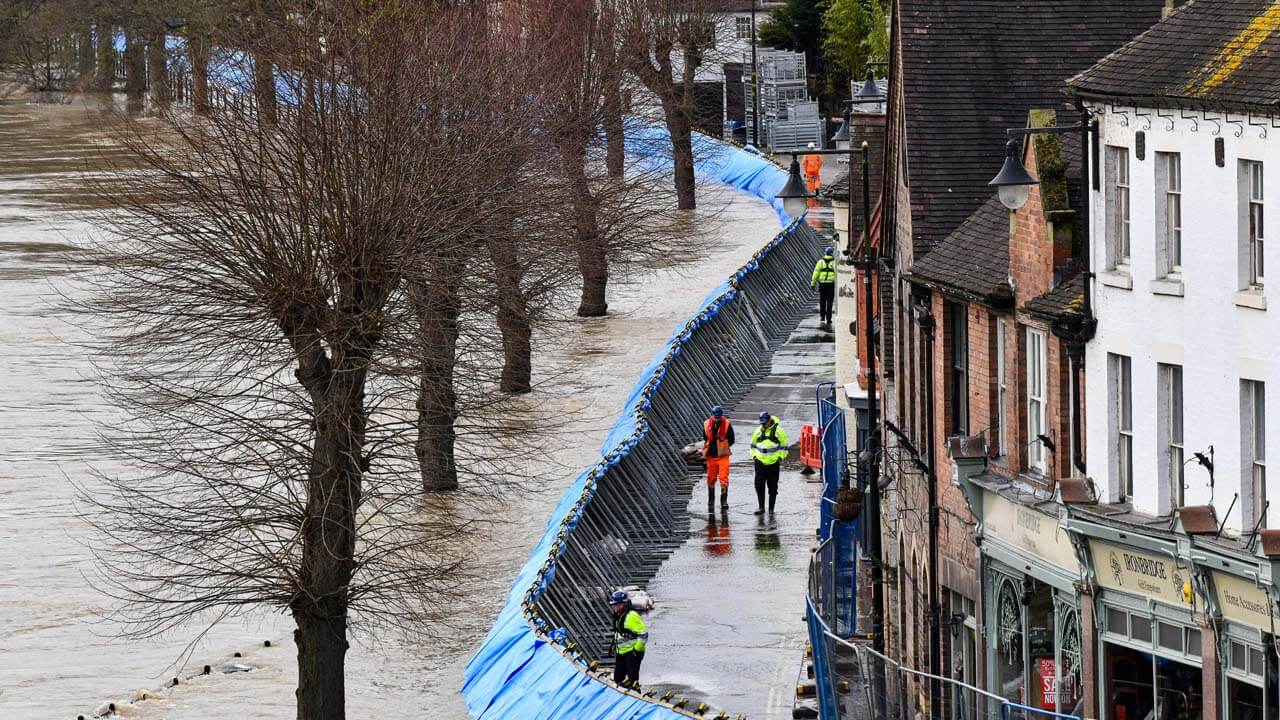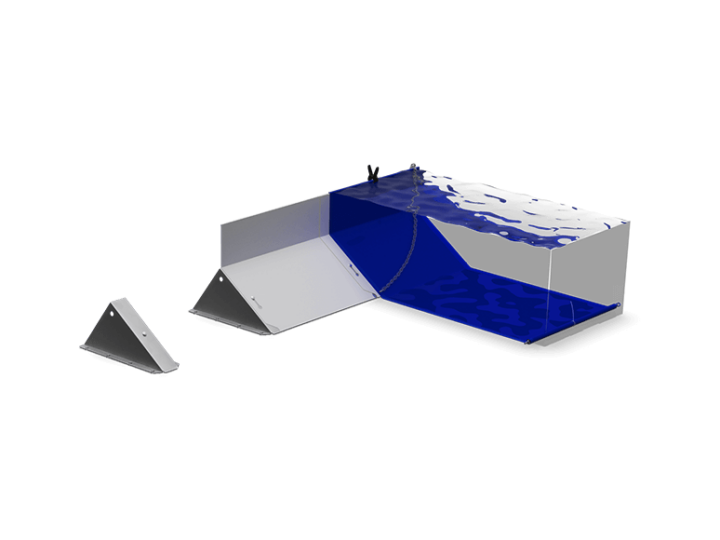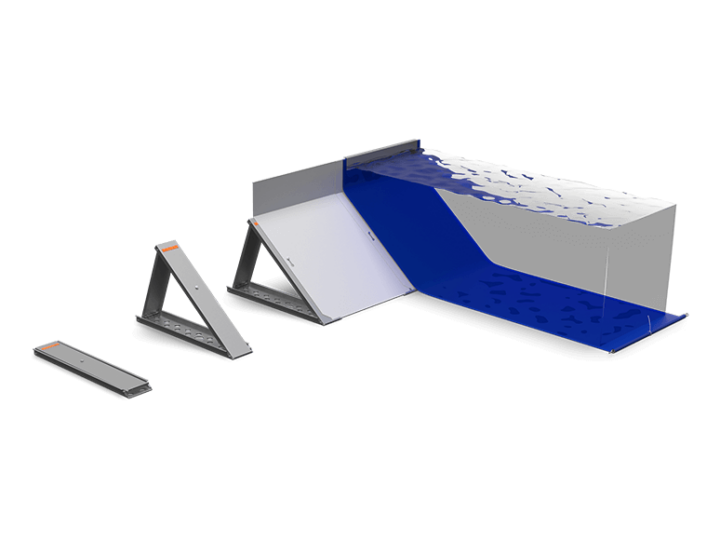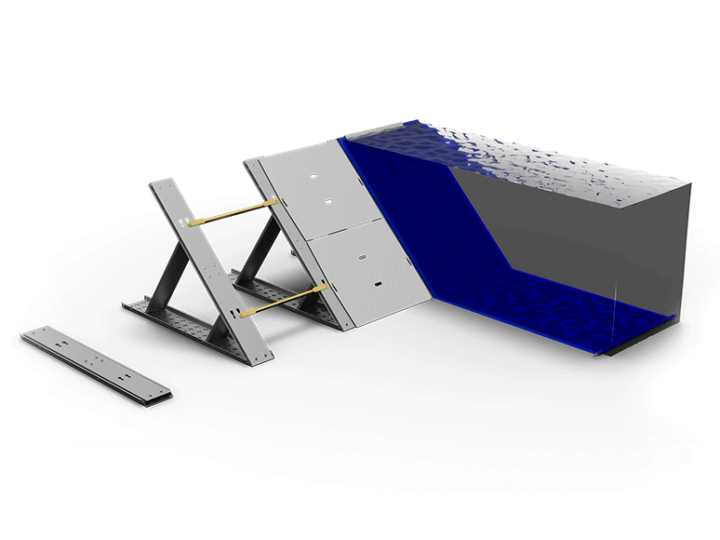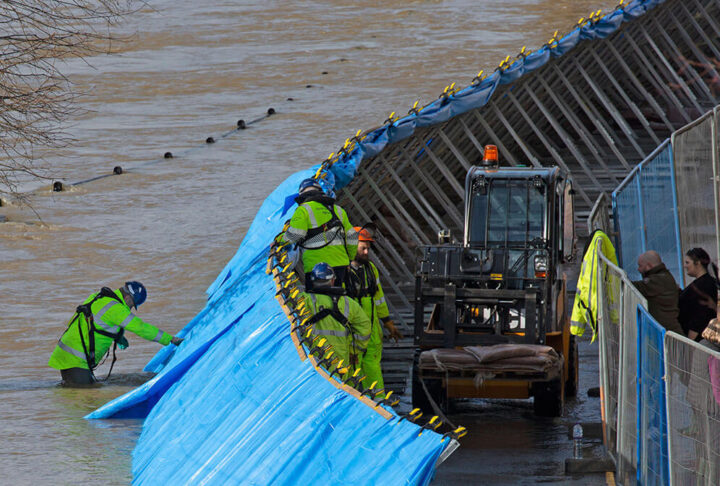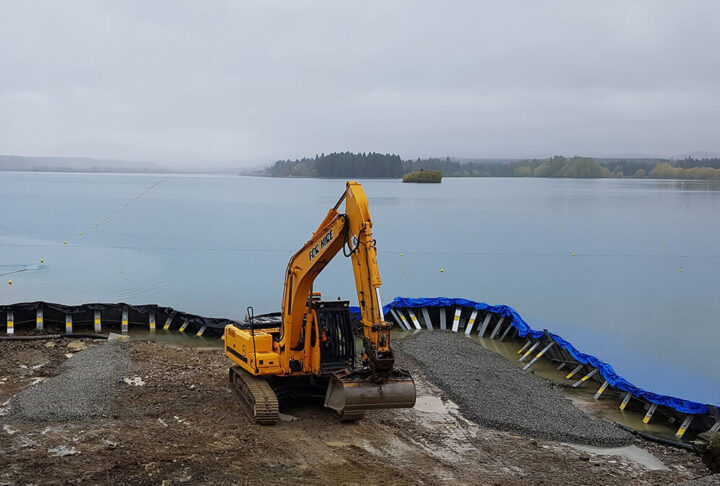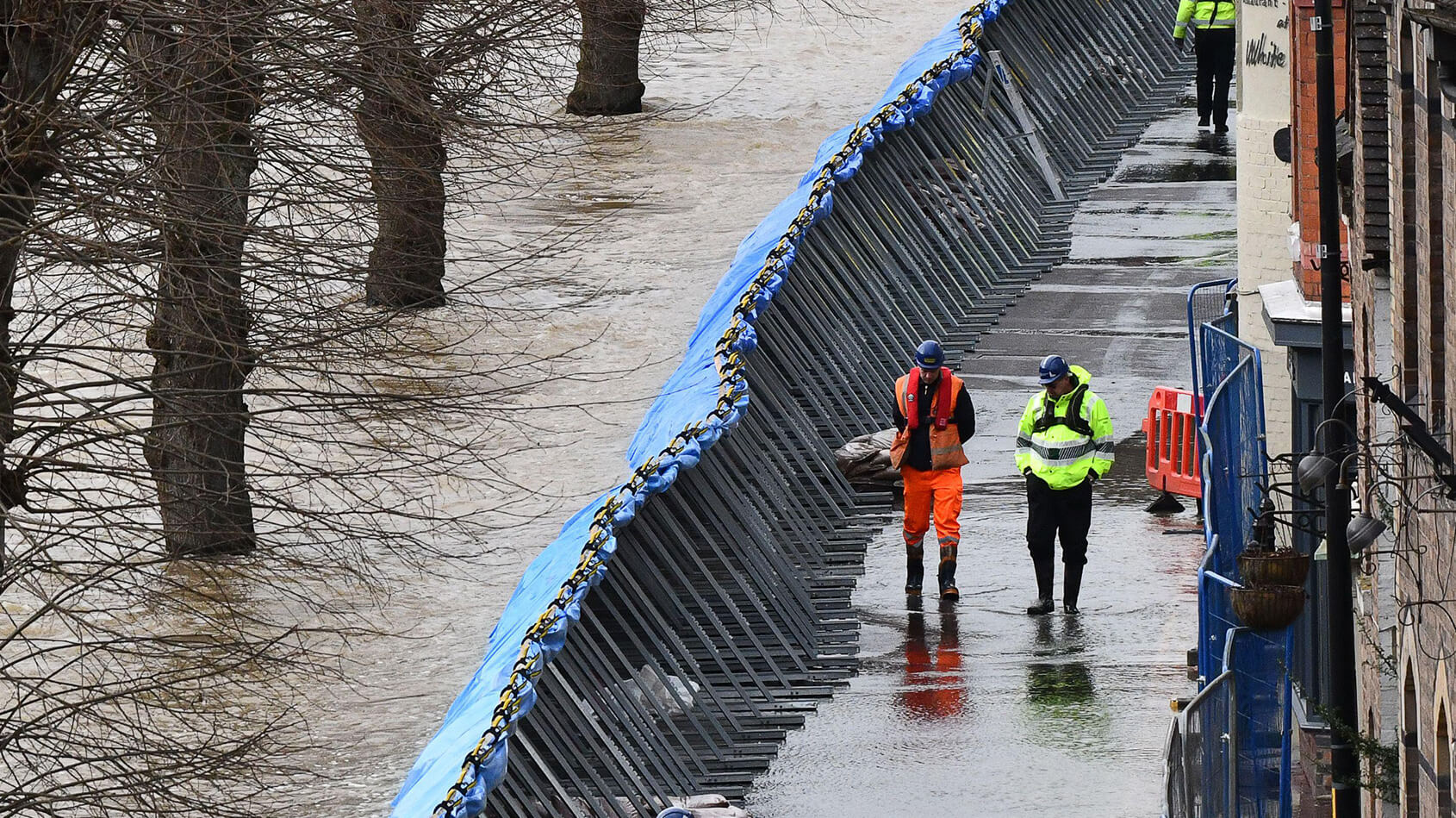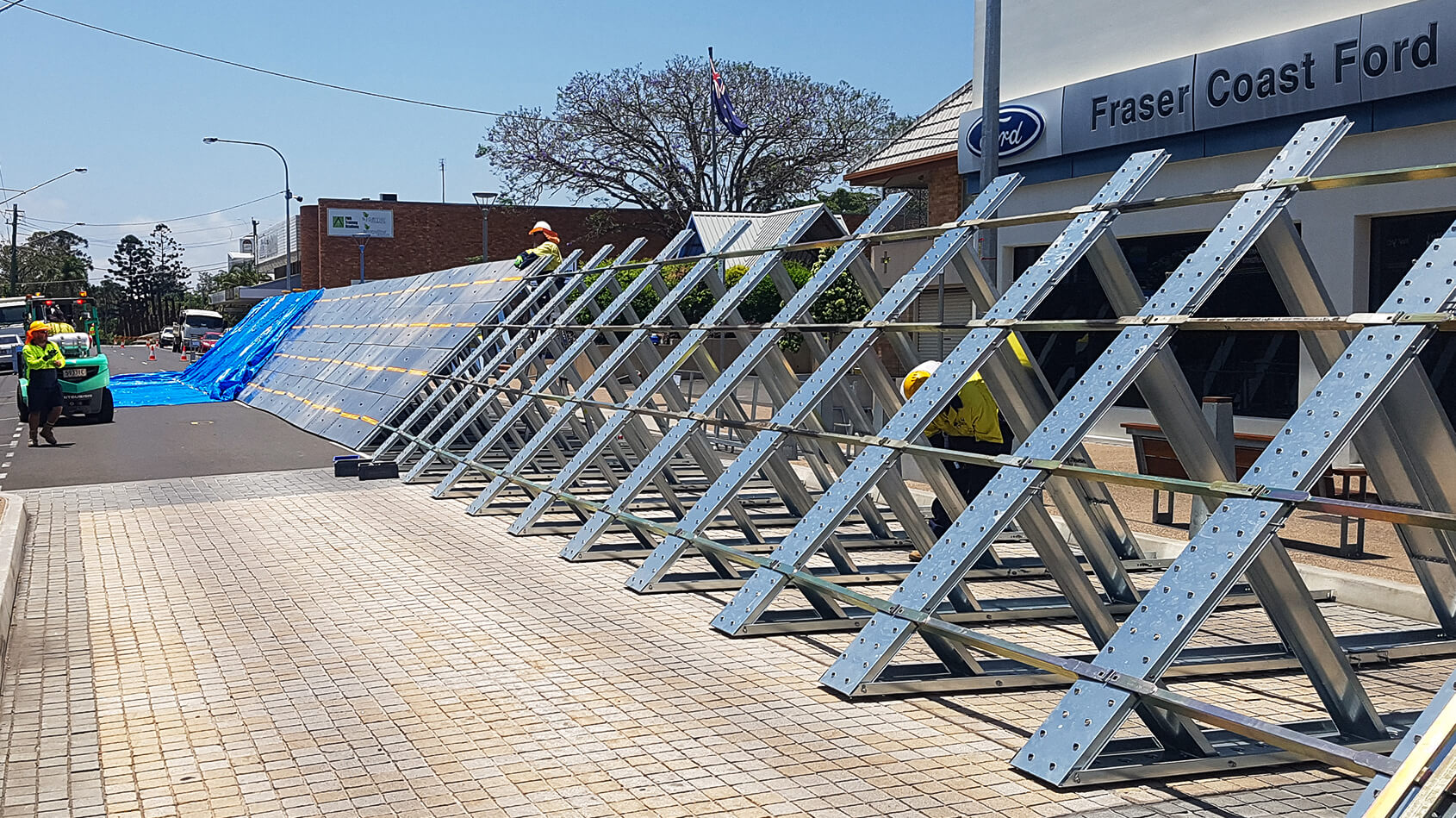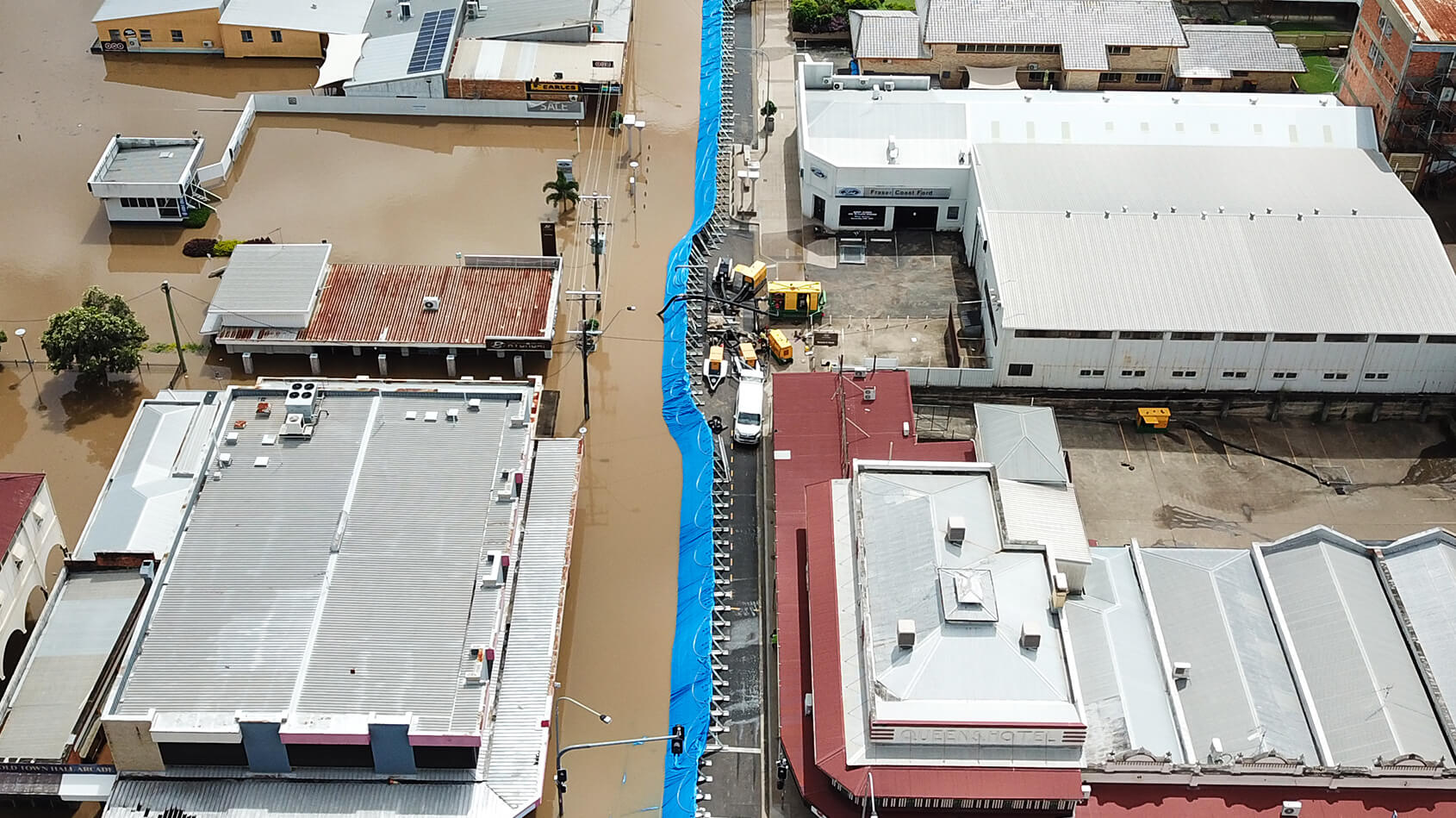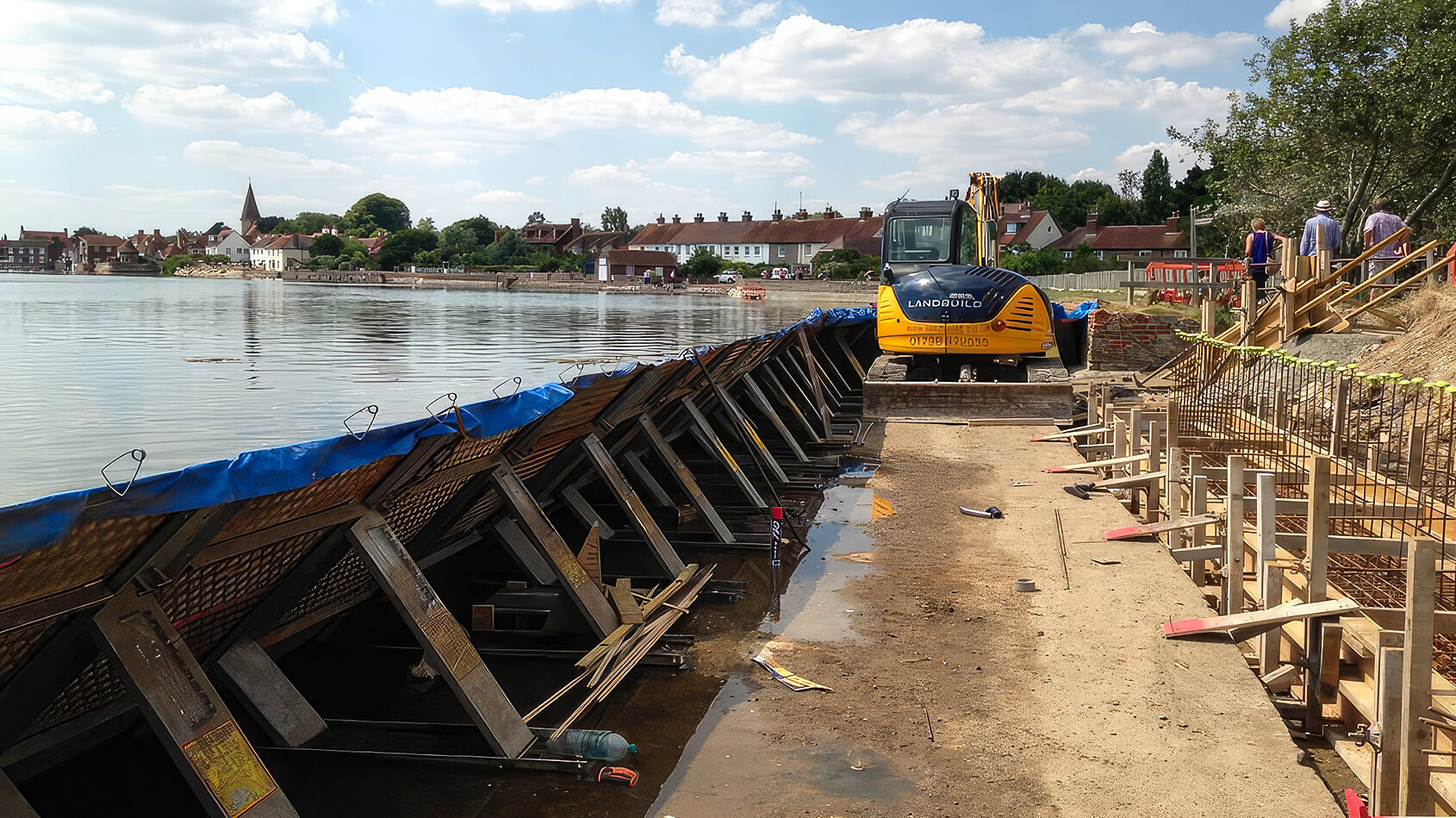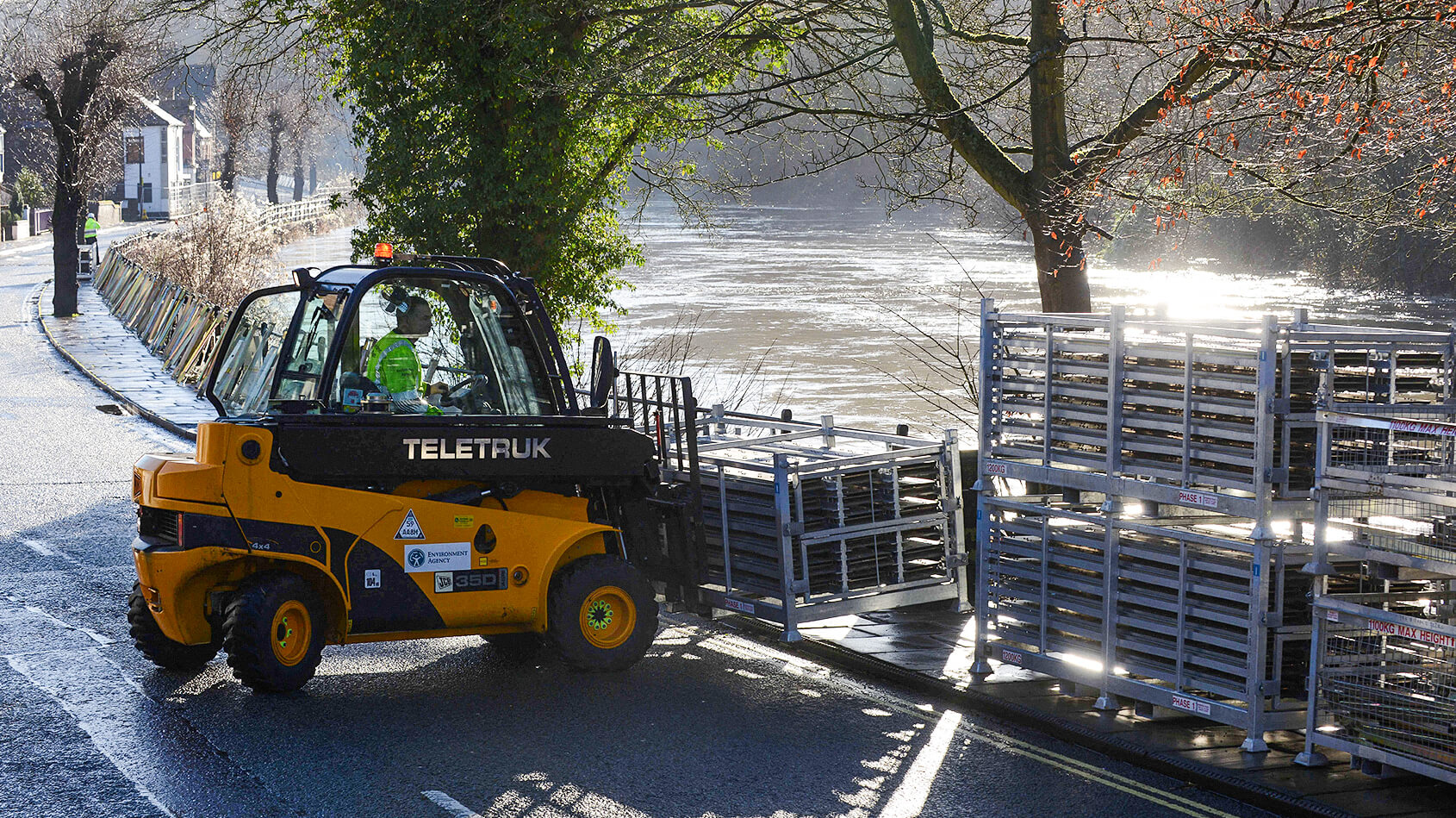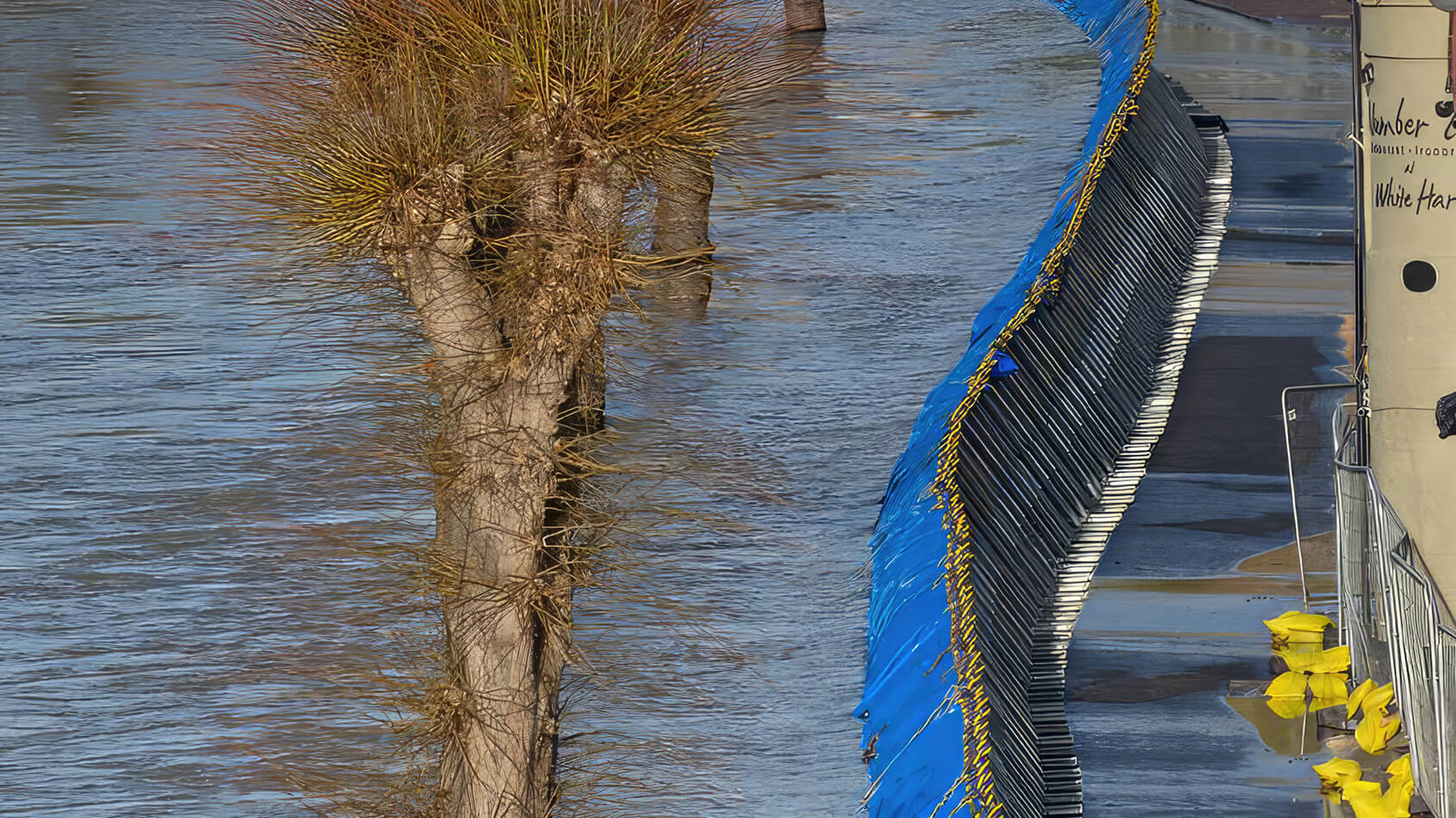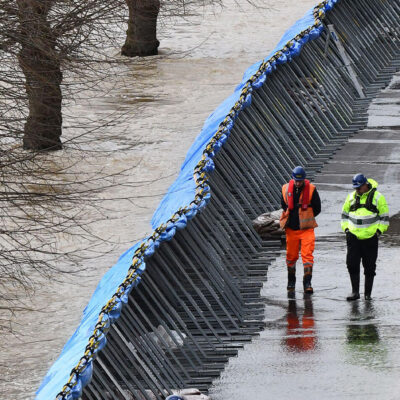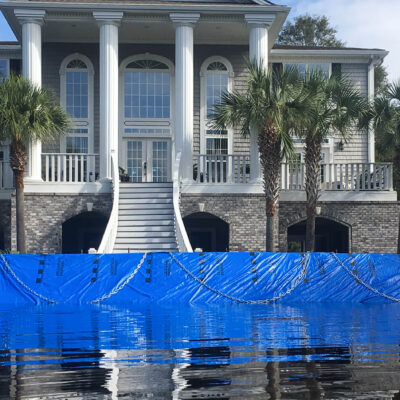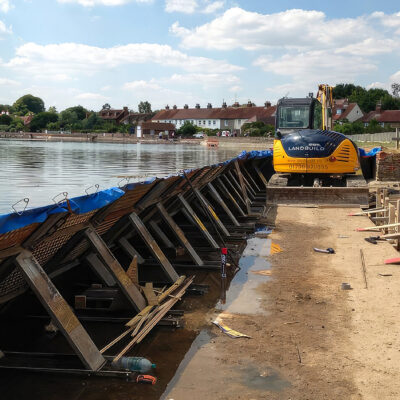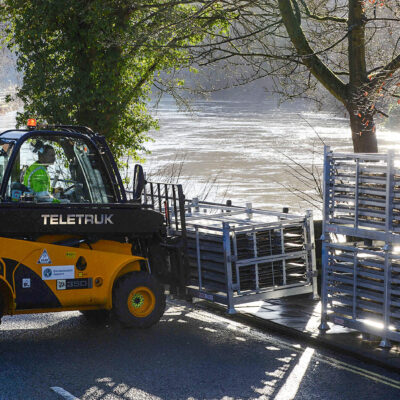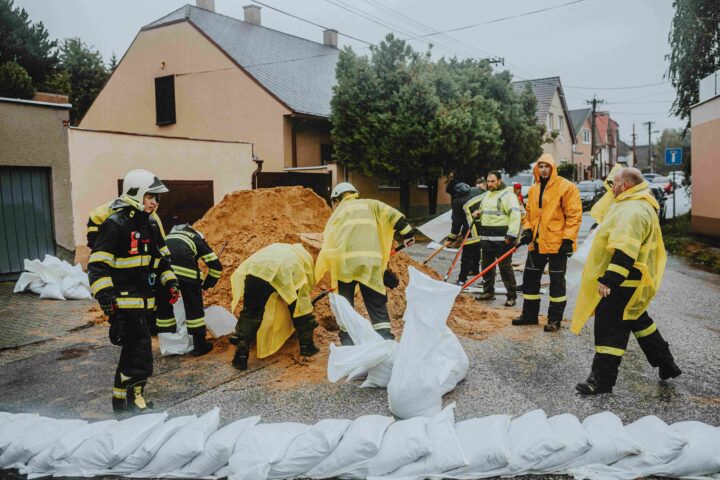Our temporary flood barriers were engineered to serve as effective protection against flood waters in various stages. These barriers can be set up, taken down and stored for reuse, making them a sustainable and smart option for climate protection.
The barriers should always be deployed by our manufacturer guidelines to make sure they are as effective as possible. That being said, their foundations are built with metal frames, covered by an impermeable plastic membrane, stopping the water flow. This helps reduce flood impact and increases safety for people and environments.
We've harnessed the power of the water itself to anchor the barriers, along with the friction of the ground to stabilize them. In addition to the actual barriers, pumps help control water levels and ground inlets or drains are sealed to prevent leaking and seepage.
The plastic membrane stretches out towards the water to slow down underground water movement, with design features in place to help the barriers withstand high water pressure and control water flow. Reduce impact and increase safety with temporary flood barriers.
